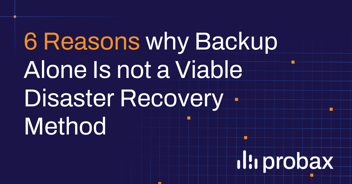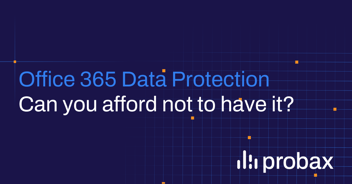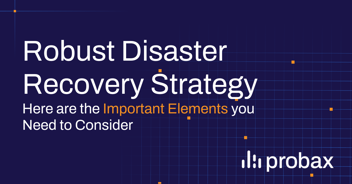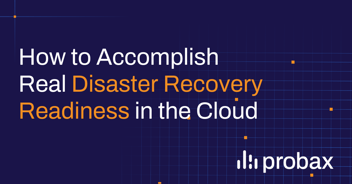Understanding the difference between high availability and disaster recovery is essential for business continuity, maintaining service availability, and preventing sky-high revenue losses, or even worse, business failure.
High availability helps you avoid service interruption, while disaster recovery makes it possible to recover your systems and continue offering your services again quickly after a disaster.
In this guide, we'll provide an in-depth overview of what high availability and disaster recovery mean, why they're important for your organization, the key differences between them, and how both can be a part of your business continuity strategy.
High Availability: What It Is and How It Works
High availability is keeping your systems running and minimizing downtime so that customers can use your services uninterruptedly.
Maintaining high availability can be challenging without conducting a proper risk assessment and understanding the core infrastructure of a service. The high availability system should also be designed in a way that the failure of some of its components doesn't affect its uptime.
Low service availability can have negative consequences on your business, such as loss of revenue, poor customer satisfaction, and damaged reputation. For critical systems, the losses can be much more severe. For example, in the emergency services sector, service downtime can disrupt communication between individuals and providers, leading to fatal consequences.
To prevent a chain reaction, it's essential to avoid a single point of failure when building your system infrastructure. This is only possible by eliminating potential modes of failure, like server downtime or power outages in a data center.
High availability practices are most useful for predictable events, like planned maintenance.
Implementing High Availability
Ideally, your HA systems should be available 100% of the time, as in a fault-tolerant system, but that's just unrealistic. Most businesses aim at a 99.99% expected system availability time.
Here's what you can do to make this possible:
- Failure detection. Failure detection relies on historical data and future failure predictions based on the system's potential failure modes. If something has caused your system to fail in the past, the same event might occur again in the future.
- Eliminating single points of failure. Design your system so that if one component fails, the others aren't affected and your services remain available.
- Built-in redundancy. Designing a system with built-in redundancy involves implementing backup components to take over the failed ones in case of a disruption to maintain a reliable failover and crossover process.
- Multi-server clusters. Advanced high-availability systems incorporate multi-server clusters. So if one server fails, the other one takes over, and if the whole cluster fails, another server cluster replaces it.
- Load balancing. Distributing workloads automatically is important to maintain a high availability and avoid overloading your system's resources. With load balancing, your system automatically distributes the workloads evenly over its resources to prevent downtime or performance issues.
Tracking Key Metrics to Measure and Improve Your High Availability Efforts
Measuring your high availability efforts involves tracking two key metrics that tell you if you're on the right path: MTTR and MTBF. MTTR (Mean Time to Restore) demonstrates the average time it takes to get your services back online in case of a disruption, while MTBF (Mean Time Before Failures) is the total amount of time your services are available before a failure happens again.
Explaining Disaster Recovery
Disaster recovery (DR) is the ability of a business to recover from disasters quickly. These disasters can be in the form of cyberattacks, malicious insider actions, natural disasters, and human error.
Implementing disaster recovery starts with creating a disaster recovery plan that acts as a roadmap for how the organization will respond in case of disaster.
Typically, a disaster recovery checklist includes the following key points:
- Critical systems and networks that have a major impact on the business it covers
- Employees or departments responsible for those systems and networks
- Information about RTO and RPO
- Steps required to recover systems and networks
- Compliance measures
- Other emergency steps
An organization may either build and manage their run its own DR site or opt for DRaaS (Disaster Recovery as a Service) to save infrastructure and operational costs. The DR site is usually located in a remote location, and it's used to back up the company's important systems.
There are various disaster recovery solutions that you can choose from, which include backup and recovery software, DR management services, infrastructure hosting services, and end-to-end disaster recovery as a service (DRaaS) solutions. The scope of these disaster recovery systems varies depending on your organization's budget, resources, and requirements.
What Metrics Should You Keep an Eye on to Assess Your Disaster Recovery Strategy?
In disaster recovery, there are two relevant metrics that you need to track regularly: RTO and RPO.
RTO stands for Recovery Time Objective, which is the acceptable amount of time for processes to be down before the business incurs intolerable losses.
RPO, on the other hand, stands for Recovery Point Objective, which is the point in time from which the system has to be restored. The RPO is largely influenced by your backup frequency. If you create an automatic backup every 24 hours, and a disaster happens 2 hours before the backup, you'll be able to restore your systems to their state from 22 hours before.
What is the Difference Between High Availability and Disaster Recovery?
The core differences between high availability and disaster recovery can be summarized in the following two points:
1. Preventative vs Corrective Approach
High availability is a preventative approach. In other words, the goal of designing a system for high availability is to prevent downtime from happening in the first place or at least minimize it.
That's not the case with disaster recovery, which is a corrective measure. Disaster recovery only kicks in when a disaster has already happened. In that case, a DR solution can be utilized to bring your primary system back online. Of course, the solution still has to be implemented before the disaster happens.
2. Number of Systems Concerned
High availability is often implemented on each system individually, where redundancies are integrated separately. This way, when one system fails, the other systems remain up and running, ensuring uninterrupted services for the end consumer.
On the other hand, disaster recovery focuses on multiple systems. Due to current technological limitations, you may not be able to recover all of your systems at once. For that reason, you'll need to prioritize recovering your systems in your disaster recovery plan based on criticality.
High Availability and Disaster Recovery Reinforce One Another
Both high availability and disaster recovery are essential for maintaining business continuity. The shared similarities between the two approaches include:
- Risk mitigation. Both approaches are intended to mitigate risks related to data inaccessibility.
- Regular asset monitoring and management. Software solutions that send automated alerts in case of failures are utilized in high availability and disaster recovery strategies.
Example of High Availability vs Disaster Recovery
One example of the difference between high availability and disaster recovery is Microsoft Office 365, a solution that boosts your clients' productivity and enables remote and flexible work and collaboration without requiring on-premises hosting.
The Microsoft Shared Responsibility Model states that the company is only responsible for maintaining high availability for its customers.
However, it's the customer's responsibility to back up and protect their sensitive Office 365 data with a third-party disaster recovery solution. So, while Microsoft can guarantee that its services will be available 99.999% of the time, it doesn't guarantee the safety of your data.
Ready to Protect Your Systems With a Reliable Disaster Recovery Solution?
High availability will keep your customers happy, until disaster strikes and it's too late to get things right again.
Probax Hive is a simple and efficient DR solution that eliminates the complexity out of disaster recovery. It's a highly customizable solution that keeps your data and backup data protected and ensures that you achieve your RPO and RTO goals.
Sign up now for a free trial to experience how Hive works in action.
You need DRaaS in your MSP toolkit
Traditional backup only protects a segment of data, and a data protection strategy based on backup alone presents a significant risk to most organizations. That's why our practical and free white paper Most MSPs Have Inadequate Disaster Recovery Solutions outlines everything your MSP needs to know about the importance of DRaaS.






